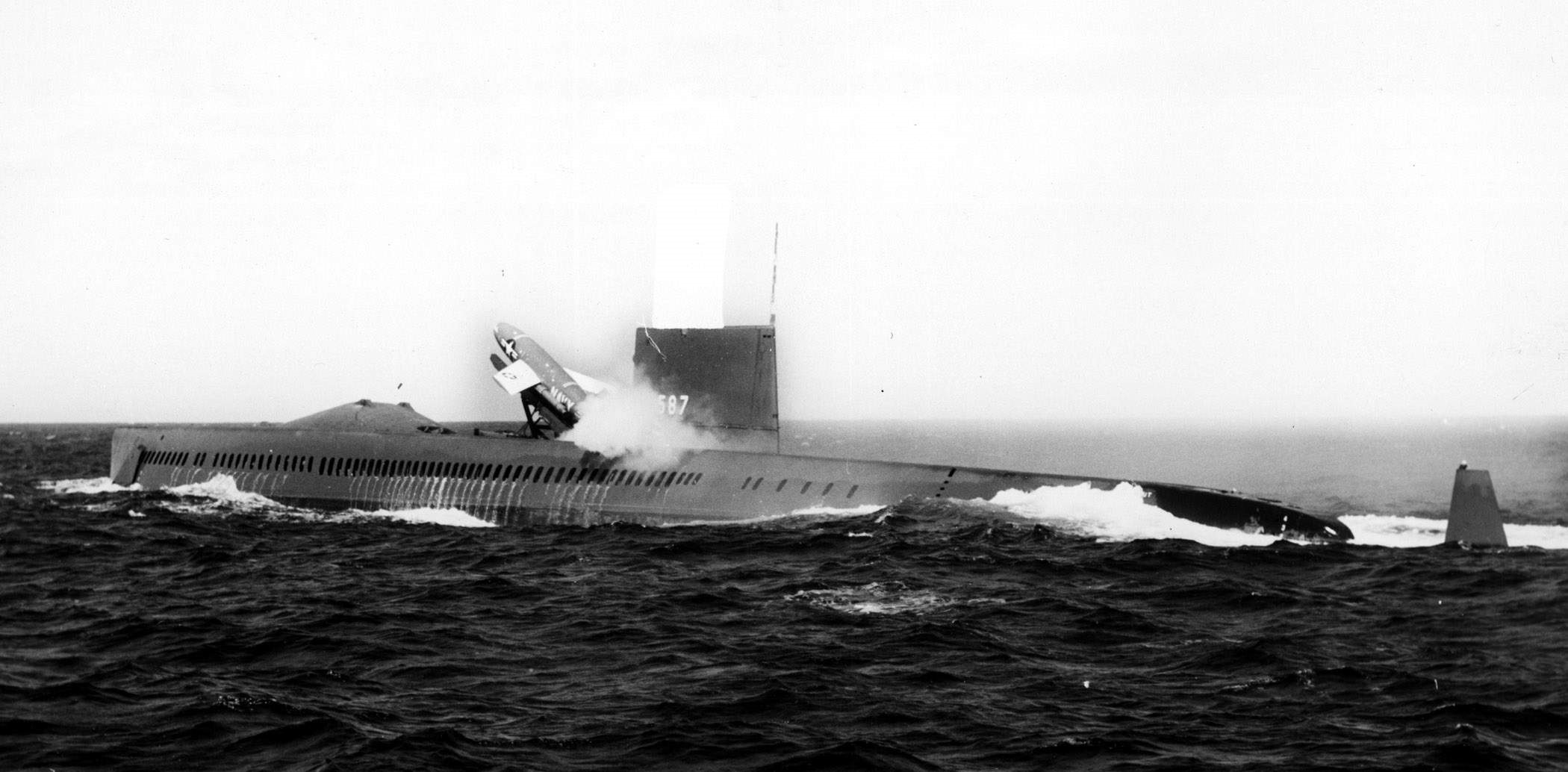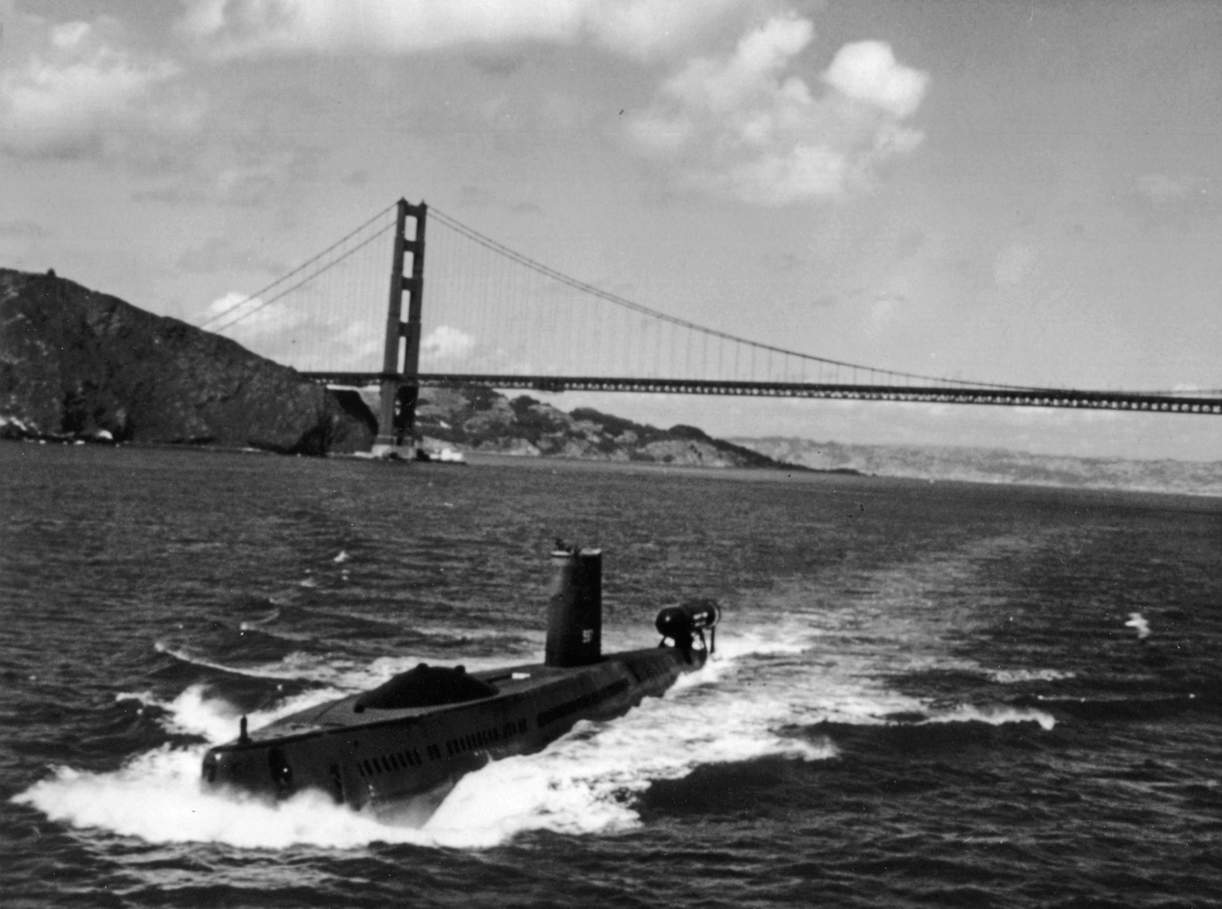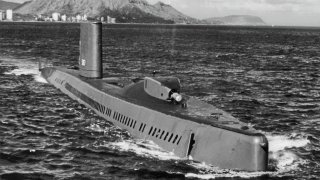The Navy Had a Nuclear Spy Submarine Capable of 'Underwater Espionage'
The USS Halibut (SSGN-587) was a revolutionary nuclear-powered guided missile submarine, commissioned in 1960. Initially designed to launch nuclear cruise missiles, Halibut became the first U.S. submarine to successfully launch a guided missile, playing a key role in the U.S. nuclear deterrence strategy.
What You Need to Know: The USS Halibut (SSGN-587) was a revolutionary nuclear-powered guided missile submarine, commissioned in 1960. Initially designed to launch nuclear cruise missiles, Halibut became the first U.S. submarine to successfully launch a guided missile, playing a key role in the U.S. nuclear deterrence strategy.

-Later, it was converted for special operations, including espionage missions like Operation Ivy Bells, where it tapped Soviet underwater communications.
-Halibut was also involved in investigating the wreck of Soviet submarine K-129. After serving various roles, Halibut was decommissioned in 1976 and scrapped in 1994.
USS Halibut: A Nuclear Submarine with Many Lives
Before the US Navy named their submarines for American cities, submarines were named for fish (as one Senator quipped about the naming change, fish don’t vote). And back when US submarines were named for fish, SSGN-587 bore the name Halibut, the mild-flavored flatfish.
The USS Halibut started life as a nuclear-powered guided missile submarine before being converted into a special operations platform, and then finally, into an attack submarine. Commissioned in the first week of 1960, the Halibut was laid down at Mare Island Naval Shipyard in Vallejo, California (where the USS Guitarro would sink in a construction accident).
Sign of the Times: Meet USS Halibut
Indicative of trends in submarine warfare during the middle 20th century, the Halibut was designed as a diesel-electric submarine but would be build as a nuclear-powered submarine. Notably, the Halibut was the first submarine to be designed with the capacity to launch guided missiles, specifically, the Regulus I and II nuclear cruise missiles.

To accommodate the firing of the guided missiles, Halibut featured a main deck that rested well above the waterline so as to provide a dry area from which to launch the missiles. During the Halibut’s shakedown cruise, she successfully launched a guided missile, earning the distinction as the first submarine to do so.
Demonstrating the ability to fire a nuclear-tipped guided missile made the Halibut a vital component of the US’s nuclear deterrence strategy, namely, the nuclear triad. Consisting of air-, land-, and sea- platforms, the nuclear triad ensured the US had a first and second strike option against the Soviet Union (or any other nuclear power).
The sea-based component of the nuclear strategy was vital – especially in the era before the stealth bomber had been invented – giving the US a hard-to-detect and mobile nuclear option that could lurk, on-call, and provide a viable second strike option.
Apparently, the Halibut even had its second strike marching orders; in the event of a nuclear exchange with the USSR, the Halibut was to respond with a launch against the Soviet naval base at Petropavlovsk-Kamchatsky, presumably to target the submarine pens, and take out the Soviet subs capable of matching the Halibut’s sea-based nuclear option.
Special operations
The Halibut was eventually transitioned into a special operations role, where she performed sensitive tasks like underwater espionage against the USSR. In the special operations role, the Halibut tapped Soviet communications between Kamchatka peninsula and the Sea of Okhkotsk, as part of Operation Ivy Bells. Also, the Halibut was dispatched to the sunken Soviet submarine, K-129.
The mission to investigate K-129 was detailed in the book Spy Sub – A Top Secret Mission to the Bottom of the Pacific. Although, in the book, author Dr. Roger C. Dunham was required to change the name Halibut to USS Viperfish (SSN-655), which of course was fictional.
Eventually, however, the Halibut was mothballed, in 1976, in Washington state. The submarine wouldn’t be stricken from the Naval Vessel Registry until 1986 however, and then disposed of through the Ship-Submarine Recycling Program, also in Washington state, in 1994.
About the Author: Harrison Kass
Harrison Kass is a defense and national security writer with over 1,000 total pieces on issues involving global affairs. An attorney, pilot, guitarist, and minor pro hockey player, Harrison joined the US Air Force as a Pilot Trainee but was medically discharged. Harrison holds a BA from Lake Forest College, a JD from the University of Oregon, and an MA from New York University. Harrison listens to Dokken.
Image Credit: Creative Commons.


